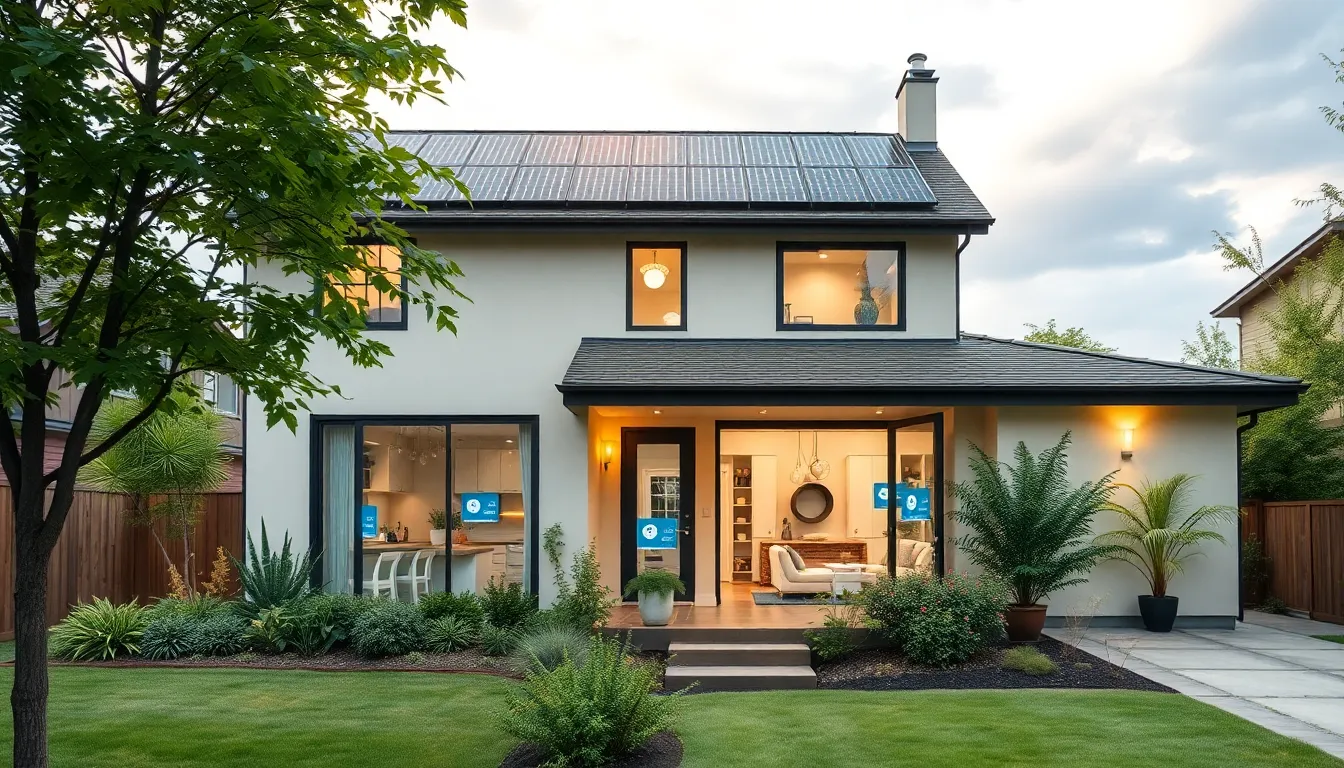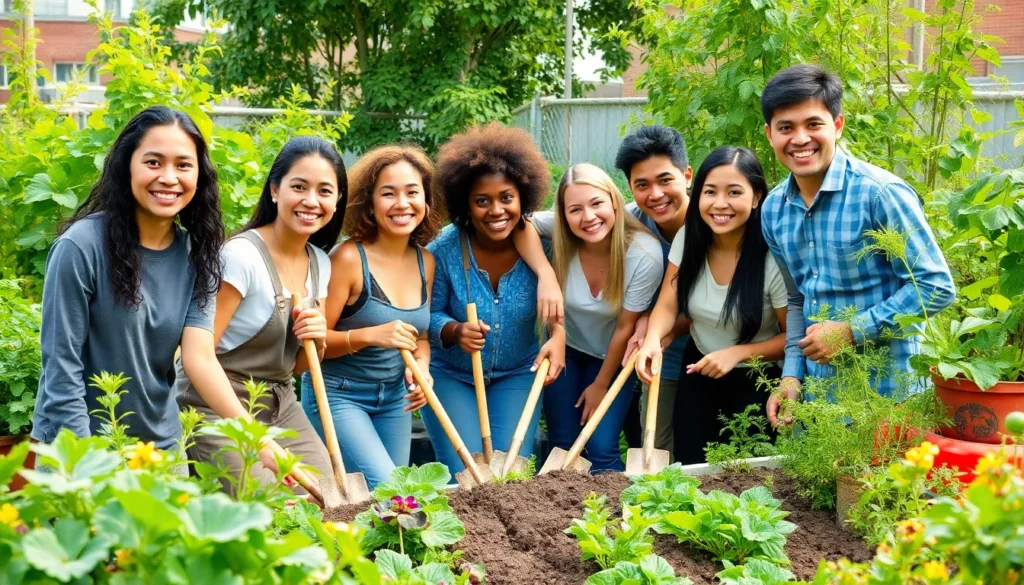In a world where plastic straws are public enemy number one and eco-friendly is the new black, sustainable living innovations are stepping into the spotlight. Forget the days of boring recycling bins and guilt trips about carbon footprints. Today’s green solutions are as exciting as they are essential, transforming everyday life into a playground of eco-conscious choices.
From solar-powered gadgets that make you feel like a superhero to smart home systems that save energy without sacrificing style, these innovations are not just good for the planet—they’re downright cool. Embracing sustainability doesn’t mean giving up comfort or convenience; it means leveling up your lifestyle while giving Mother Earth a high-five. Let’s dive into the world of sustainable innovations that are turning the tide and proving that living green can be fun, fashionable, and fabulously forward-thinking.
Sustainable Living Innovations
Sustainable living innovations encompass a wide range of technologies and practices designed to reduce environmental impact. Solar panels represent one of the most popular solutions, providing clean energy for homes and businesses. Energy-efficient appliances also play a vital role, consuming less power while maintaining functionality. Smart home systems allow users to track energy usage, optimizing consumption patterns.
Urban gardening techniques facilitate the growth of food within limited spaces, promoting self-sufficiency. Rainwater harvesting systems collect and store rainwater for irrigation and household use. Biodegradable products reduce landfill waste, offering consumers eco-friendly alternatives to traditional materials.
Electric vehicles contribute to decreased greenhouse gas emissions, encouraging a shift away from fossil fuels. Innovations in waste management, such as composting systems, convert organic waste into valuable soil additives. Upcycled products not only provide unique items but also prevent material waste.
Incorporating these innovations into daily life can lead to significant environmental benefits. Urban environments increasingly adopt green roofs to enhance air quality and reduce heat islands. While making sustainable choices can seem daunting, advancements in technology simplify the process. Access to information and resources fosters a growing community focused on sustainability.
Investing in these innovations creates a more sustainable future for all. Communities benefit from shared resources, emphasizing collaboration and shared responsibility. Integrating sustainable practices into everyday life proves feasible and rewarding, ultimately promoting a healthier planet.
Technological Innovations

Sustainable living innovations leverage technology to create eco-friendly solutions. These advancements significantly reduce environmental footprints while enhancing quality of life.
Renewable Energy Solutions
Solar panels stand out as effective renewable energy solutions. They convert sunlight into electricity, decreasing reliance on fossil fuels. Wind turbines generate power by harnessing wind energy, providing another alternative. Hydroelectric systems utilize flowing water to produce energy efficiently. Each of these solutions contributes to lower greenhouse gas emissions. In a recent report, the International Renewable Energy Agency indicated that renewable energy made up 29% of global electricity generation in 2020, highlighting the growing importance of these technologies.
Smart Home Technologies
Smart home technologies play a crucial role in energy conservation. Thermostats adjust heating and cooling based on user behavior, optimizing energy usage. Smart lighting systems enable remote controls that help reduce unnecessary consumption. Additionally, energy monitoring devices track usage patterns, providing insights for further savings. According to research from Navigant Consulting, smart home technology adoption is expected to reach 1.5 billion devices by 2025, reflecting a significant shift toward more sustainable living. These technologies not only streamline daily routines but also promote eco-friendly practices within households.
Sustainable Agriculture Practices
Sustainable agriculture plays a crucial role in enhancing food security while protecting natural resources. Various innovative practices contribute to this goal.
Urban Farming Techniques
Urban farming techniques utilize limited space in cities to produce food locally. These methods reduce transportation emissions and enhance access to fresh produce. For instance, community gardens and rooftop farms transform concrete landscapes into green spaces. They cultivate diverse crops, improving urban biodiversity. Moreover, participants often engage in sustainable practices like composting and organic gardening, which enrich soil health. These initiatives foster community engagement, where city dwellers collaborate in growing food, thereby strengthening local ties.
Vertical Farming Innovations
Vertical farming innovations revolutionize traditional agriculture by growing crops in stacked layers. These systems optimize land use, making production possible in urban areas with limited space. They commonly use controlled environment agriculture, allowing year-round crop cultivation regardless of external weather conditions. Hydroponics and aeroponics are popular growing methods in vertical farms, using significantly less water than conventional farming. Additionally, vertical farms contribute to reduced pesticide use and enhanced food security. By integrating technology and sustainability, these farms elevate the potential of urban agriculture to meet the needs of growing populations.
Eco-Friendly Materials
Innovations in eco-friendly materials play a pivotal role in sustainable living. These materials significantly reduce the environmental impact of everyday products.
Biodegradable Products
Biodegradable products decompose naturally, minimizing landfill waste. Options include items made from plant-based materials, such as cups, utensils, and packaging. Many companies now use cornstarch or sugarcane to create these alternatives, making them viable replacements for plastic. The use of such products not only lowers pollution but also encourages responsible consumption behaviors. Choosing biodegradable solutions supports a circular economy, proving beneficial for both consumers and the planet.
Sustainable Fashion
Sustainable fashion focuses on ethical production and eco-friendly materials. Brands increasingly utilize organic cotton, recycled polyester, and Tencel, which come from renewable sources or utilize waste products. Innovations in dyeing techniques reduce water usage and avoid harmful chemicals, protecting waterways. With a demand for transparency, many labels now highlight their supply chain practices, ensuring consumers make informed choices. Investing in sustainable fashion contributes to minimizing the fast fashion crisis, encouraging a more conscious approach to clothing.
Community Initiatives
Community initiatives play a critical role in advancing sustainable living practices. They bring together people to promote environmental stewardship and encourage adaptability to eco-friendly solutions.
Local Sustainability Programs
Local sustainability programs often focus on enhancing residents’ awareness and participation in green practices. Examples include community-wide recycling drives, tree planting events, and farmer’s markets that support local agriculture. Programs like these engage citizens in reducing their carbon footprints while fostering connections within neighborhoods. Collaboratives can also set up renewable energy co-ops, allowing households to utilize resources like solar energy collectively. These efforts empower communities to take charge of their environmental impact and promote a shared commitment to sustainability.
Educational Campaigns
Educational campaigns aim to inform and inspire individuals about sustainable practices. Workshops and seminars on topics such as composting, energy efficiency, and water conservation teach practical skills. Schools often partner with local organizations to integrate sustainability topics into their curriculum, fostering eco-conscious habits from an early age. Social media campaigns further amplify these messages, creating platforms for sharing success stories and encouraging dialogue. Through these efforts, communities cultivate a culture of sustainability that extends beyond individual actions to collective change.
Conclusion
Sustainable living innovations are reshaping how individuals engage with their environment. By integrating modern technology and eco-friendly practices into daily routines, people can enjoy a lifestyle that’s both stylish and responsible. The shift towards renewable energy, smart home solutions, and sustainable fashion reflects a growing awareness of the need for change.
Communities play a crucial role in this movement, fostering collaboration and education around sustainable practices. As more individuals embrace these innovations, the collective impact can lead to a healthier planet. Every small step taken toward sustainability contributes to a larger goal of environmental preservation and responsible living.

